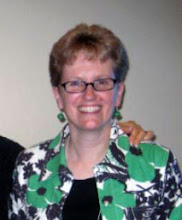
A few years back our school district went through some administrative changes. Within weeks of the change the parents of children with disabilities were alarmed when they were notified that the district had changed the Education Plans of all of the children who receive summer services. These changes were made without holding a single IEP meeting— meetings that are required by federal law.
As the next few years unfolded many, many more problems came to light about the way our district was being administered. The Special Ed parents knew of the problems first. We often joked that our population was like the proverbial canary in the mine shaft.
Before the invention of sophisticated chemical testing equipment coal miners would bring a canary with them when they descended into deep mines. The canary would indicate the presence of poisonous fumes before the miners’ lives were in danger. As long as the canary sang the miners knew they would be all right.
In November I heard Michael Collins from the National Organization on Disability present as part of a panel at the Association of University Centers on Disability annual meeting. He was speaking about his organization’s priority of Emergency Preparedness. Collins stated, “People with disabilities are like the canary in the mineshaft—AND if they can keep us safe, or get us out, they can do it for anybody.”
This stands to reason. If our environments are accessible for people with disabilities they are accessible for all. While steps challenge many, a ramp works for everyone. How many of us have benefited from elevators and automatic doors? And who hasn’t followed the closed captioning when trying to watch the news in a crowded airport or catch a game in a noisy bar? If it works for the people with disabilities everyone succeeds.
It also seems to follow that it if we can meet the challenge of educating the kids with learning needs, we can educate anyone. And if we can address the healthcare needs of folks with significant disabilities we are able to provide care for anyone.
The same can be said for housing, transportation, civil rights, employment and more. If our systems can succeed with people with disabilities they can accommodate anyone. The Universal Design principles that architects use to create accessible spaces can be applied far beyond the accessibility of physical environments.
As the next few years unfolded many, many more problems came to light about the way our district was being administered. The Special Ed parents knew of the problems first. We often joked that our population was like the proverbial canary in the mine shaft.
Before the invention of sophisticated chemical testing equipment coal miners would bring a canary with them when they descended into deep mines. The canary would indicate the presence of poisonous fumes before the miners’ lives were in danger. As long as the canary sang the miners knew they would be all right.
In November I heard Michael Collins from the National Organization on Disability present as part of a panel at the Association of University Centers on Disability annual meeting. He was speaking about his organization’s priority of Emergency Preparedness. Collins stated, “People with disabilities are like the canary in the mineshaft—AND if they can keep us safe, or get us out, they can do it for anybody.”
This stands to reason. If our environments are accessible for people with disabilities they are accessible for all. While steps challenge many, a ramp works for everyone. How many of us have benefited from elevators and automatic doors? And who hasn’t followed the closed captioning when trying to watch the news in a crowded airport or catch a game in a noisy bar? If it works for the people with disabilities everyone succeeds.
It also seems to follow that it if we can meet the challenge of educating the kids with learning needs, we can educate anyone. And if we can address the healthcare needs of folks with significant disabilities we are able to provide care for anyone.
The same can be said for housing, transportation, civil rights, employment and more. If our systems can succeed with people with disabilities they can accommodate anyone. The Universal Design principles that architects use to create accessible spaces can be applied far beyond the accessibility of physical environments.
In my experience this even holds true for cultural issues. For example, if people with disabilities (including cognitive disabilities) are well integrated into a community, people with other differences are usually welcomed as well.
Conversely, when our systems have problems the ill effects are first noticeable to people with disabilities as well. Like the canary in the mineshaft the experiences of people with disabilities are often the first indicators of both society’s successes and its failures.
(Thanks to my friend Kathy who made me the miniature canary in the cage in answer to my picture dilemma!)






No comments:
Post a Comment